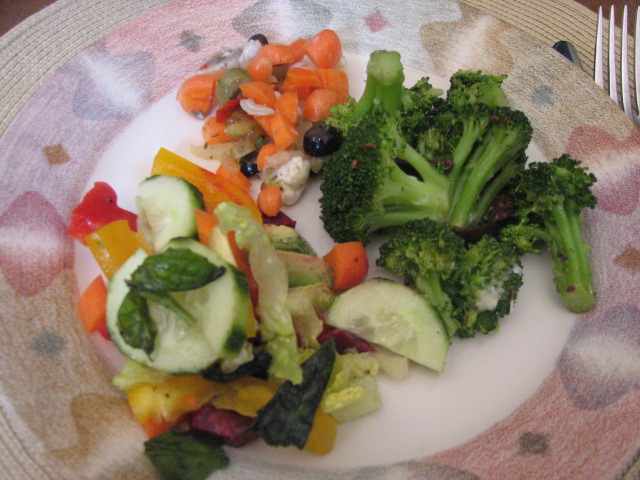The average adult American consumes about 14 grams of dietary fiber a day, far less than the recommended 25-35 grams recommended by The National Academy of Sciences’ Institutes of Medicine. What is dietary fiber, why do I need it and how do I get it? Simply put, fiber is the part of a plant that is not digested (seeds and cell walls) or absorbed by the body, but it is an important determinant of health. Dietary fiber has been shown to lower serum cholesterol, thus lowering the risk of heart disease and possibly lowering the incidence of colon cancer, the third most common form of cancer. Eating a high-fiber diet tends to require more chewing time, giving your body time to register that you are full therefore assisting in weight loss.
Fiber is often classified into two categories, soluble and insoluble.
- Soluble fiber dissolves in water forming a jelly-like bulk in the stools and is found in oat bran, apples, citrus, pears, peas, beans, legumes and psyllium (Psyllium is found in products like Metamucil, but is also available in health food stores.) Soluble fiber slows digestion and helps your body absorb vital nutrients from food. You should consume approximately 10 grams a day of soluble fiber. Soluble fiber can improve blood sugar levels reducing the risk of developing type II diabetes.
- Insoluble fiber cannot dissolve in water and possesses water-attracting properties that function to increase the bulk of the stool, to soften the stool and shorten transit time through the intestinal tract. Fiber also dilutes the concentration of colonic toxins that may be present, therefore leaving less time for certain foods to deposit impurities and cancer promoting compounds on the intestinal wall. Insoluble fiber can be found in wheat bran, corn bran, nuts, cabbage and root vegetables.
Most experts advise to slowly increase your intake of fiber to prevent gas and bloating. Adding 2-4 grams a week is a good recommendation. Here are some easy ways to increase your dietary fiber:
- Replace regular pasta with whole wheat pasta
- Sprinkle oat and/or wheat bran in muffins, pancakes and even spaghetti sauce!
- Eat high-fiber snacks such as fresh vegetables and fruits. Leafy green vegetables such as kale and spinach, broccoli, figs, prunes and raspberries are all high in fiber.
- Consume pinto, navy, Lima and kidney beans, as well as the legumes lentils and split peas.
- Buy whole grain bread with as much fiber per slice as you can find. Look for breads with 3-4 grams of fiber per slice is ideal.
Remember that when you increase your fiber, you should also increase your water intake. Try for 8 glasses a day.

